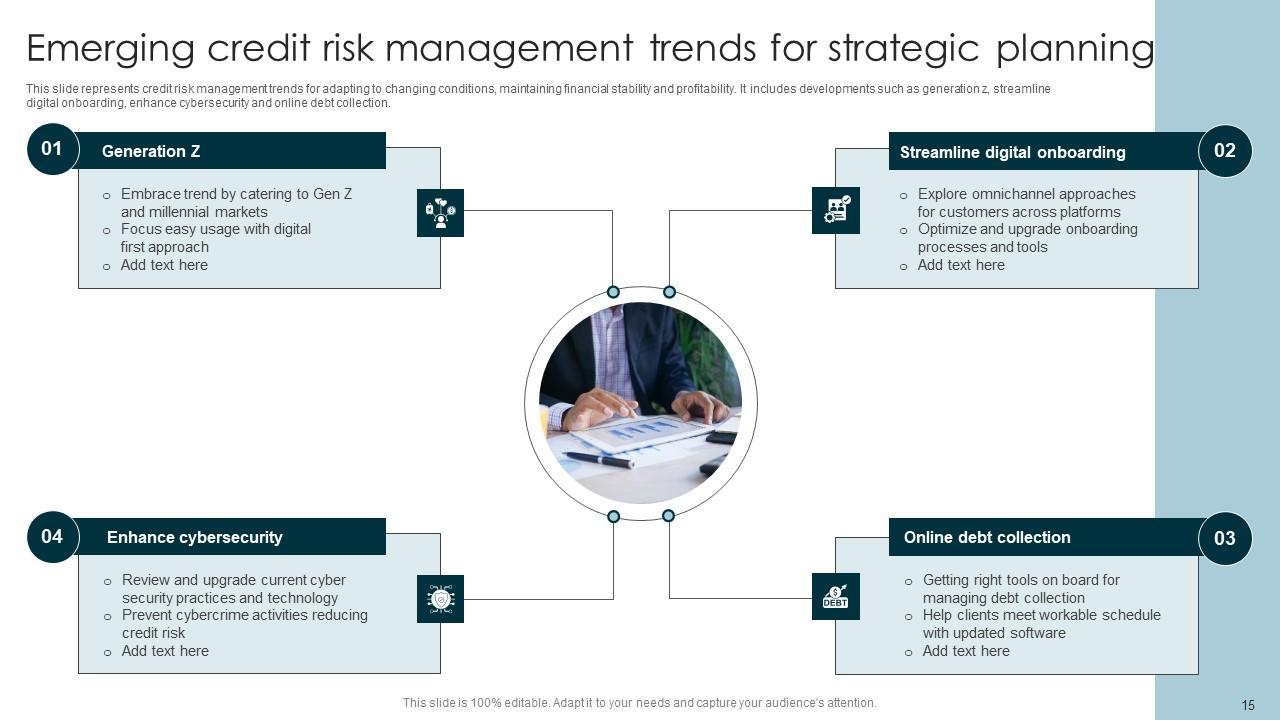In the intricate tapestry of global finance, where the threads of opportunity and risk are woven together in a delicate balance, emerging credit risk stands as a formidable challenge for financial institutions. As the world becomes increasingly interconnected, the dynamics of credit risk are evolving, demanding a sophisticated approach to management that blends traditional wisdom with innovative strategies. This article delves into the heart of how global financial institutions navigate the turbulent waters of emerging credit risk, employing a blend of cutting-edge technology, robust risk assessment frameworks, and adaptive strategies. With an authoritative lens, we explore the multifaceted landscape of credit risk management, uncovering the tools and techniques that enable institutions to not only withstand the pressures of a volatile market but also to thrive amidst uncertainty. Join us as we unravel the complexities of this critical aspect of global finance, offering insights into the mechanisms that safeguard the stability of economies worldwide.
Identifying the Unseen: Unveiling Emerging Credit Risk in Global Markets
In the intricate dance of global finance, identifying emerging credit risks is akin to navigating through a labyrinth with constantly shifting walls. Financial institutions employ a multi-faceted approach to ensure they remain one step ahead of potential pitfalls. Advanced analytics and machine learning play a pivotal role, enabling these institutions to sift through vast oceans of data, identifying subtle patterns and anomalies that could indicate brewing risks. By leveraging these technologies, banks and financial entities can proactively adjust their credit portfolios, thus mitigating potential losses before they escalate.
Furthermore, the establishment of robust risk management frameworks is crucial. These frameworks often encompass a range of strategies, including:
- Stress testing and scenario analysis to simulate potential future economic conditions and their impact on credit portfolios.
- Enhanced due diligence processes that scrutinize borrowers’ financial health and market conditions more thoroughly.
- Dynamic credit scoring models that adapt to changing market dynamics and borrower behavior.
By integrating these strategies, global financial institutions not only safeguard their assets but also contribute to the overall stability of the financial system, ensuring that the unseen risks are effectively unveiled and managed.

Strategic Frameworks: Crafting Robust Risk Management Policies
In the intricate landscape of global finance, institutions are continuously developing sophisticated strategies to navigate the labyrinth of emerging credit risks. These strategies often involve the implementation of strategic frameworks that are both agile and robust, allowing institutions to anticipate and mitigate potential threats. Key elements of these frameworks include:
- Dynamic Risk Assessment: Utilizing advanced analytics and AI-driven models to predict and evaluate potential credit risks in real-time.
- Integrated Risk Governance: Establishing a unified risk management structure that aligns with organizational goals and regulatory requirements.
- Stakeholder Engagement: Fostering transparent communication channels with stakeholders to ensure alignment and proactive risk management.
Moreover, global financial institutions are leveraging cross-functional teams to enhance their risk management capabilities. By integrating insights from diverse departments, these teams can craft policies that are not only comprehensive but also adaptable to the ever-evolving financial environment. This holistic approach ensures that institutions remain resilient and capable of thriving amidst uncertainty.
Technological Frontiers: Leveraging AI and Big Data for Risk Assessment
In the dynamic landscape of global finance, institutions are increasingly turning to Artificial Intelligence (AI) and Big Data to revolutionize their approach to credit risk management. By harnessing the power of these technologies, financial entities can now analyze vast datasets with unprecedented speed and accuracy, allowing them to identify emerging risks before they materialize. This proactive approach not only enhances decision-making but also optimizes resource allocation, ensuring that potential threats are mitigated efficiently.
- Predictive Analytics: Leveraging machine learning algorithms to forecast creditworthiness and detect anomalies.
- Real-time Monitoring: Utilizing big data to continuously assess risk factors and market changes.
- Enhanced Due Diligence: Integrating AI-driven insights to refine the evaluation of borrower profiles.
By integrating these cutting-edge tools, financial institutions are not just managing risk; they are redefining the very frameworks of risk assessment. This technological synergy empowers them to maintain a competitive edge in an ever-evolving market, ensuring stability and growth in the face of uncertainty.
Proactive Measures: Implementing Adaptive Strategies for Future Resilience
In the ever-evolving landscape of global finance, institutions are tasked with the critical responsibility of staying ahead of emerging credit risks. This requires a forward-thinking approach, leveraging adaptive strategies to ensure future resilience. Financial institutions are increasingly adopting a mix of innovative tools and practices to anticipate and mitigate potential threats. Among these, the integration of advanced analytics and artificial intelligence plays a pivotal role in identifying patterns and predicting credit defaults before they occur.
- Dynamic Risk Assessment: Continuously updating risk models to reflect real-time data and market changes.
- Scenario Planning: Crafting multiple financial scenarios to prepare for diverse economic conditions.
- Regulatory Collaboration: Engaging with regulators to align on emerging risks and compliance requirements.
- Stakeholder Engagement: Building robust communication channels with clients and partners to enhance transparency and trust.
By implementing these strategies, financial institutions not only safeguard their assets but also reinforce their commitment to sustainable economic growth. As the global market continues to shift, the agility and foresight of these institutions will determine their ability to thrive amidst uncertainty.





